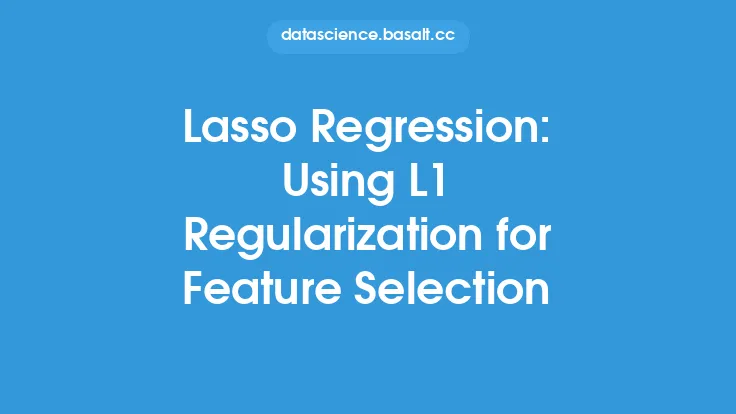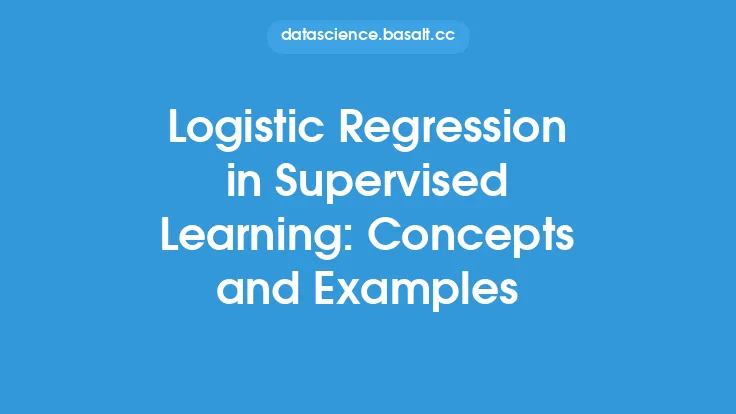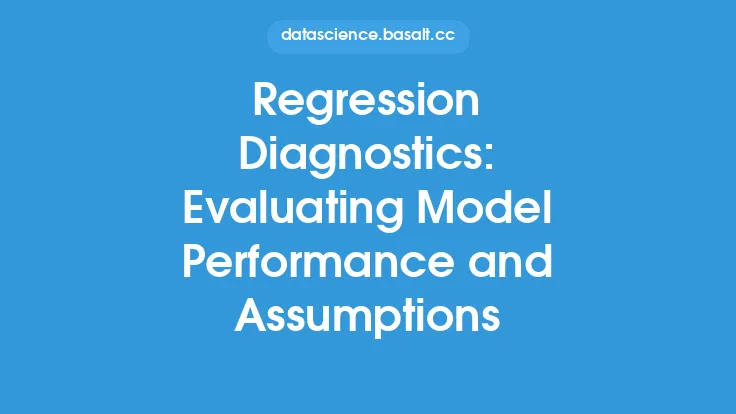In the realm of regression analysis, regularization techniques play a crucial role in preventing overfitting and improving the generalizability of models. Two popular regularization methods are L1 and L2 regularization, which are used in Lasso and Ridge regression, respectively. However, these methods have their own limitations. L1 regularization can result in sparse models, where some coefficients are set to zero, while L2 regularization can lead to models with large coefficients. To overcome these limitations, Elastic Net regression was introduced, which combines the benefits of both L1 and L2 regularization.
Introduction to Elastic Net Regression
Elastic Net regression is a type of linear regression that uses a combination of L1 and L2 regularization. The method was introduced by Zou and Hastie in 2005 as a way to overcome the limitations of L1 and L2 regularization. The Elastic Net regression model is defined as:
β = argmin(β) [ (y - Xβ)^2 + λ1 * ||β||1 + λ2 * ||β||2^2 ]
where β is the coefficient vector, y is the response variable, X is the design matrix, λ1 and λ2 are the regularization parameters, and ||.||1 and ||.||2 are the L1 and L2 norms, respectively.
How Elastic Net Regression Works
Elastic Net regression works by adding a penalty term to the loss function, which is a combination of the L1 and L2 penalties. The L1 penalty is used to induce sparsity in the model, while the L2 penalty is used to shrink the coefficients. The combination of the two penalties allows for a more flexible model that can handle both sparse and non-sparse data.
The regularization parameters λ1 and λ2 control the amount of regularization applied to the model. The value of λ1 determines the amount of L1 regularization, while the value of λ2 determines the amount of L2 regularization. By adjusting these parameters, the model can be tuned to achieve the desired level of sparsity and coefficient shrinkage.
Advantages of Elastic Net Regression
Elastic Net regression has several advantages over other regularization methods. One of the main advantages is that it can handle both sparse and non-sparse data. In cases where the data is sparse, the L1 penalty can induce sparsity in the model, while in cases where the data is non-sparse, the L2 penalty can shrink the coefficients.
Another advantage of Elastic Net regression is that it can handle correlated features. In cases where the features are highly correlated, L1 regularization can result in unstable models, while L2 regularization can lead to models with large coefficients. Elastic Net regression can handle these cases by using a combination of L1 and L2 regularization.
Choosing the Regularization Parameters
Choosing the regularization parameters λ1 and λ2 is a critical step in Elastic Net regression. The values of these parameters determine the amount of regularization applied to the model and can significantly affect the performance of the model.
One way to choose the regularization parameters is to use cross-validation. Cross-validation involves splitting the data into training and testing sets and evaluating the performance of the model on the testing set. The regularization parameters can be tuned by iterating over a range of values and selecting the values that result in the best performance.
Another way to choose the regularization parameters is to use information criteria, such as the Akaike information criterion (AIC) or the Bayesian information criterion (BIC). These criteria can be used to evaluate the performance of the model and select the regularization parameters that result in the best fit.
Implementation of Elastic Net Regression
Elastic Net regression can be implemented using a variety of algorithms, including coordinate descent and gradient descent. Coordinate descent is a popular algorithm for implementing Elastic Net regression, as it is efficient and can handle large datasets.
In R, Elastic Net regression can be implemented using the `glmnet` package. The `glmnet` package provides a function called `glmnet`, which can be used to fit an Elastic Net regression model. The function takes in the design matrix, the response variable, and the regularization parameters as input and returns the coefficient vector and the fitted values.
In Python, Elastic Net regression can be implemented using the `scikit-learn` library. The `scikit-learn` library provides a class called `ElasticNet`, which can be used to fit an Elastic Net regression model. The class takes in the design matrix, the response variable, and the regularization parameters as input and returns the coefficient vector and the fitted values.
Conclusion
Elastic Net regression is a powerful tool for regression analysis that combines the benefits of L1 and L2 regularization. The method can handle both sparse and non-sparse data and can be used to induce sparsity in the model or shrink the coefficients. The regularization parameters can be tuned using cross-validation or information criteria, and the model can be implemented using a variety of algorithms. Overall, Elastic Net regression is a useful addition to the toolkit of any data analyst or statistician working with regression models.





